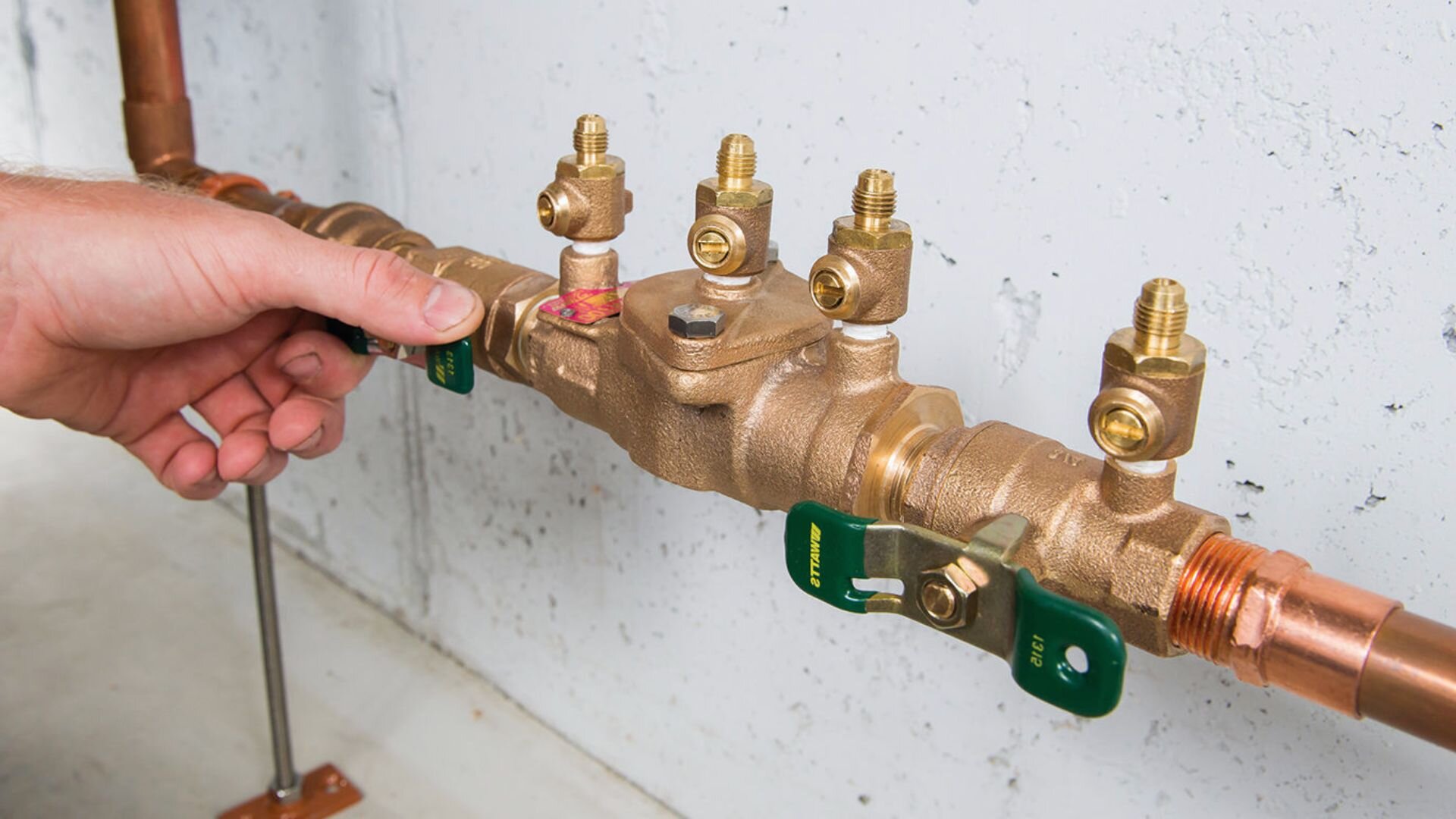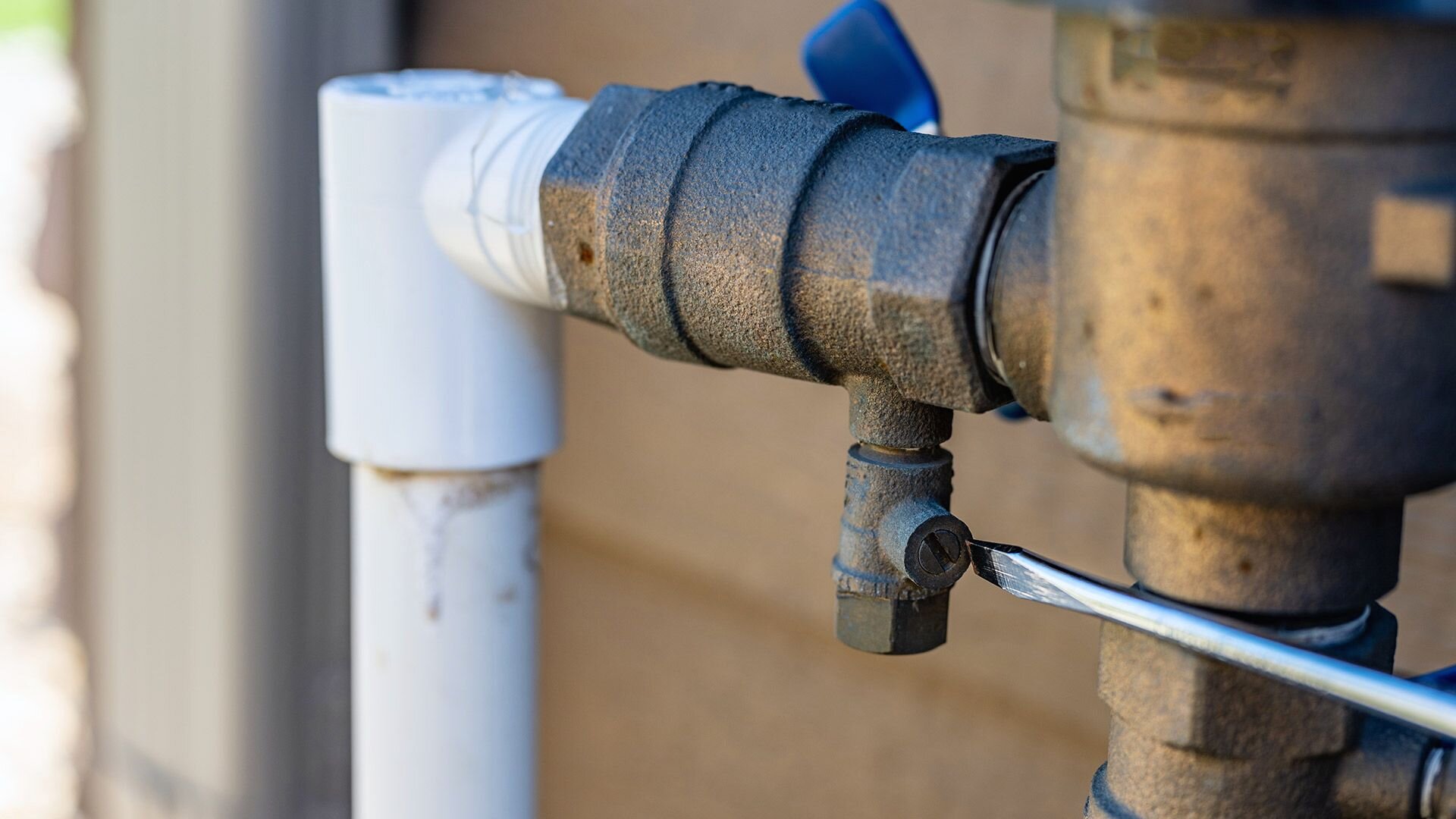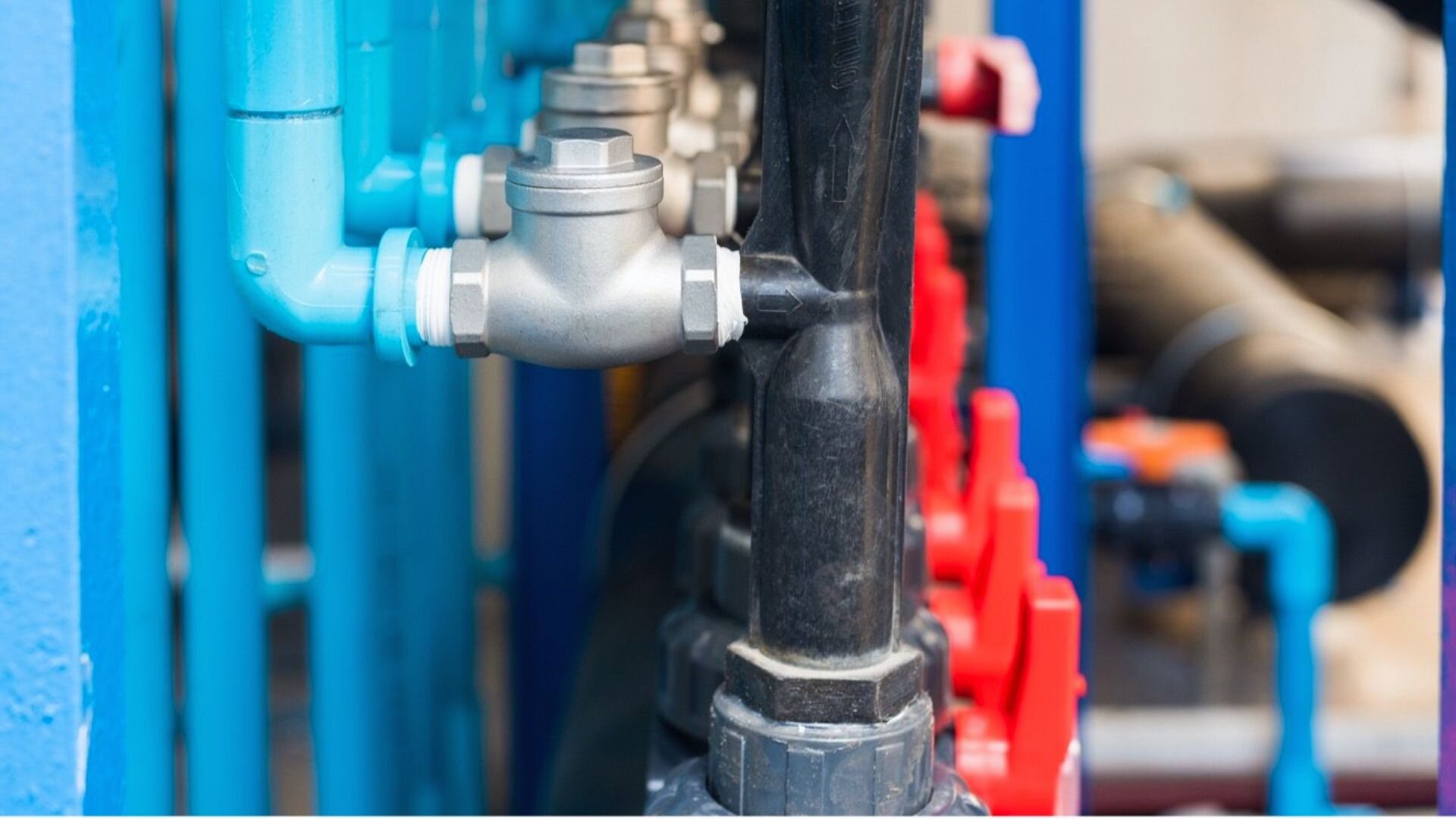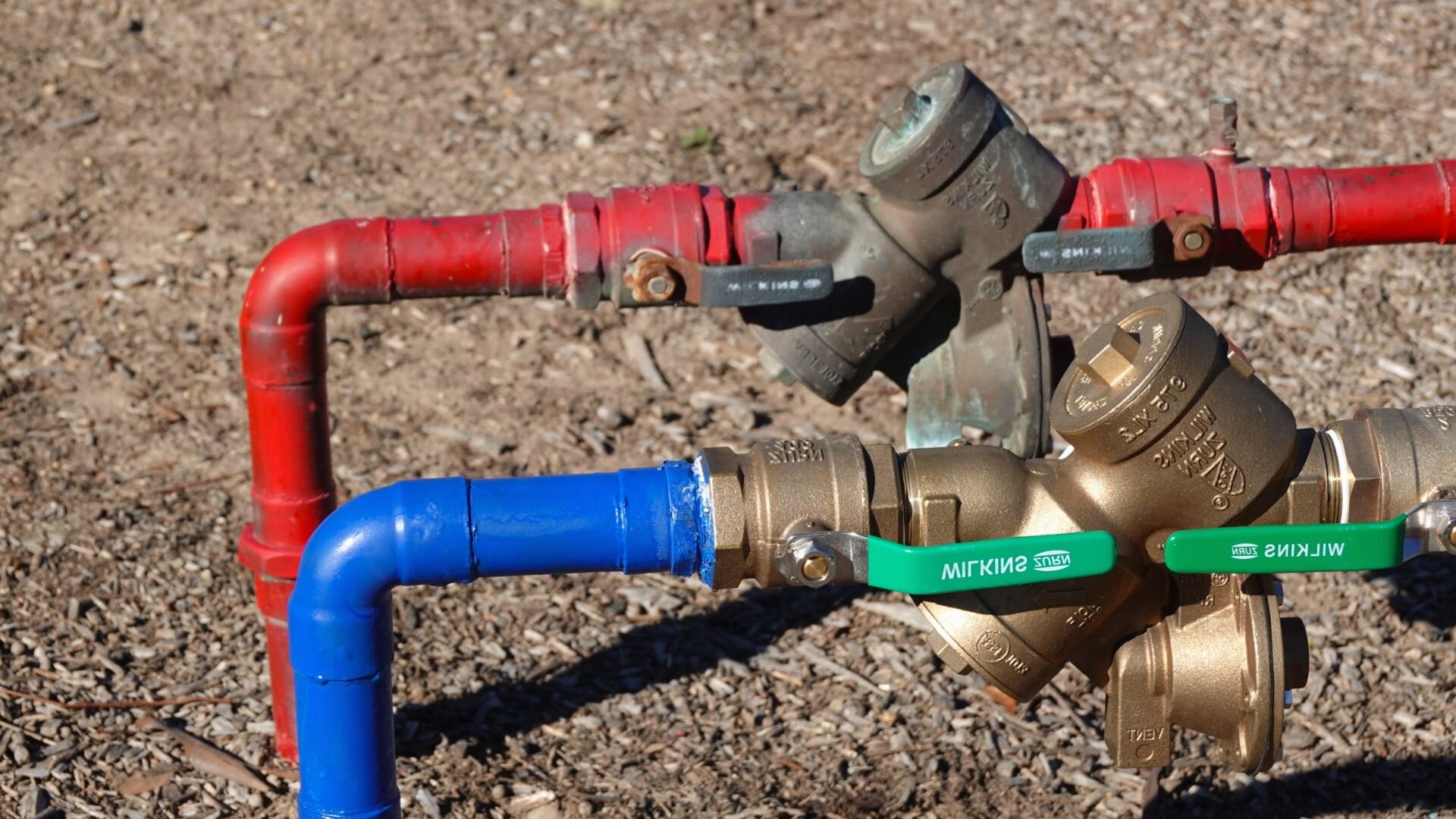Keeping school water systems safe is vital for students’ and staff’s wellbeing. Backflow devices are key to preventing contamination and keeping plumbing systems secure.
If we understand the risks of backflow and the importance of these devices, we can better protect everyone’s health and safety on campus.
Understanding Backflow Devices
Backflow devices are crucial in plumbing systems to stop water from flowing backward and keep it clean. They act like barriers, making sure water only goes one way and avoids unwanted reverse flow.
Various backflow devices exist, each tailored to a specific protection need. The common ones include check valves, double-check valves, and reduced pressure zone (RPZ) devices.
Check valves are simple, one-way valves that allow water to flow in one direction and prevent backflow. Double-check valves, which incorporate two check valves in series, provide an additional layer of protection.

The most robust and reliable backflow prevention device is the RPZ device. It consists of multiple check valves and a relief valve, creating a complex mechanism that offers the highest protection against backflow. RPZ devices are typically required in high-risk situations where the potential for contamination is significant, such as in schools, healthcare facilities, and industrial settings.
Backflow devices work by using differential water pressure. If the water supply pressure drops or goes negative, these devices kick in, closing valves to stop any backward flow. This keeps clean water separated from any potential contamination sources, ensuring water remains safe.
You need to ensure that the right kind of backflow prevention device is installed at the school and that it is properly maintained. Regular maintenance and testing of backflow devices are crucial to ensure proper functioning. Certified professionals should conduct periodic inspections, repairs, and testing to verify that the devices are in optimal condition and compliant with local regulations.
Why Backflow Devices Matter in Schools
A backflow device is critical in ensuring the safety and well-being of students, teachers, and staff within school environments. Here are key reasons why backflow devices matter in schools:
1. Protecting Water Quality
Backflow devices safeguard against water contamination. Backflow prevention is essential in schools, where students and staff rely on clean water for drinking, cooking, and maintaining hygiene.
These devices effectively isolate the potable water supply from potential sources of contamination, such as chemical storage areas or irrigation systems, ensuring that the water remains safe and free from harmful substances.
2. Safeguarding Health
Contaminated water can pose serious health risks, particularly for children who are more vulnerable to waterborne diseases. Backflow devices prevent the backflow of non-potable water, which could carry harmful bacteria, chemicals, or other contaminants.
Mechanical backflow prevention assemblies have internal seals, springs, and moving parts subject to fouling, wear, or fatigue. They can also be bypassed by a mechanical backflow preventer and air gaps.
Therefore, all backflow prevention assemblies must be tested periodically to ensure they function correctly. By maintaining the integrity of the water supply, these devices help protect the health and well-being of students and staff, reducing the risk of water-related illnesses.

3. Compliance with Regulations
Many local regulations and building codes require the installation of backflow prevention devices in schools. Compliance with these regulations not only ensures the safety of the water supply but also demonstrates the school’s commitment to meeting industry standards and providing a safe environment for learning.
4. Mitigating Legal and Financial Liabilities
Schools can face significant legal and financial liabilities in the event of water contamination due to backflow. Schools can mitigate these risks by having proper backflow devices and conducting regular maintenance and testing to avoid costly legal battles, reputational damage, and potential disruptions to educational activities.
5. Promoting a Healthy Learning Environment
Students and staff need a healthy and conducive learning environment to thrive. Schools create a safer and healthier atmosphere by prioritising the installation and maintenance of backflow devices. This protects physical well-being and contributes to a positive educational experience for everyone involved.
The Risks of Neglecting Backflow Prevention
Neglecting backflow prevention in plumbing systems can lead to significant risks and consequences. Here are some of the critical risks associated with ignoring backflow prevention:
Water Contamination
Without backflow prevention, the risk of water contamination rises sharply. Backflow can bring in contaminants like chemicals and bacteria into drinking water. Using or consuming this tainted water may cause health problems such as stomach issues and infections.
Health Hazards
Neglecting backflow prevention puts individuals’ health and safety at risk, especially in environments like schools with a high concentration of students and staff. Waterborne diseases and illnesses can quickly spread, leading to absenteeism, reduced productivity, and compromised well-being. Children, with their developing immune systems, are particularly susceptible to the adverse effects of contaminated water.
Compliance Violations
Local regulations and building codes often require installing and maintaining backflow prevention devices in specific settings, including schools. Neglecting these backflow prevention requirements can result in compliance violations and potential legal consequences. Once proper backflow prevention measures are implemented, non-compliance may lead to fines, penalties, or even the closure of educational facilities.

Reputation Damage
Ignoring backflow prevention can damage a school’s reputation. Parents care deeply about water safety for their kids. News about contamination, or not having the right measures, can lead to lost trust, bad press, and fewer enrollments.
Financial Implications
Managing the fallout from water contamination caused by backflow can be costly. Fixing the issue, legal bills, and medical expenses can pile up fast. Plus, insurance may not cover these costs if backflow prevention was ignored and seen as a policy breach.
Ensuring Safety and Compliance
In conclusion, the importance of backflow devices in schools cannot be overstated. These devices protect the water quality, health, and safety of students, teachers, and staff.
Backflow devices mitigate the risks of waterborne illnesses and ensure compliance with regulations by preventing the backflow of contaminants into the potable water supply.
To ensure your school’s plumbing system has proper backflow prevention device measures, it is vital to seek professional assistance. Fixed Today, a trusted provider of plumbing services, offers expert installation, maintenance, and testing of backflow devices. Our experienced team is dedicated to ensuring the safety and integrity of your school’s drinking water supply.
Don’t compromise on the health and well-being of your school community. Contact Fixed Today to schedule a consultation and safeguard your school’s water system. Together, let’s prioritise the safety of our educational institutions and create a healthy environment for learning and growth.















